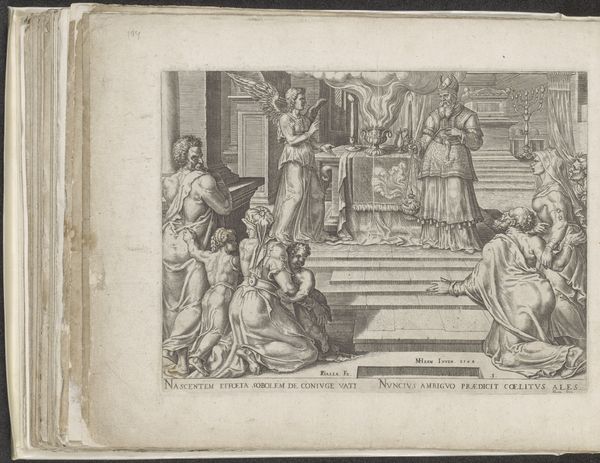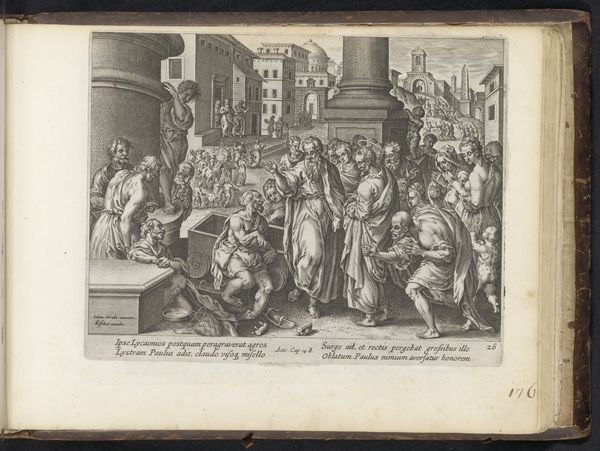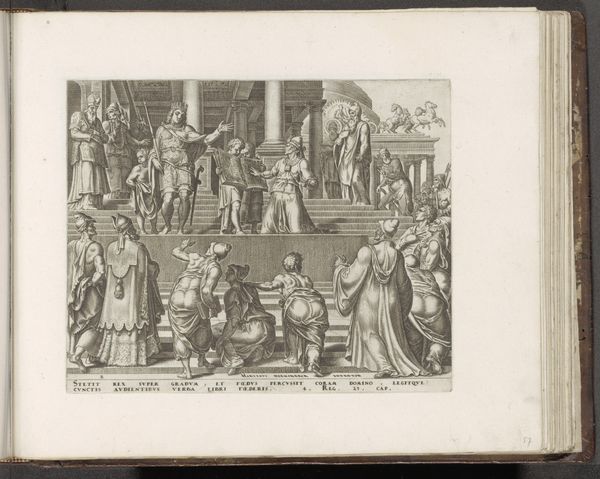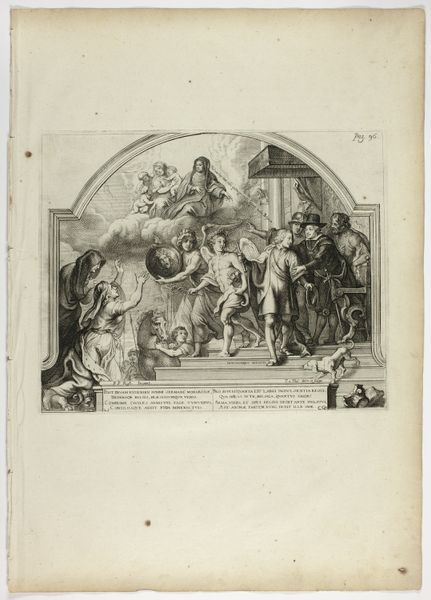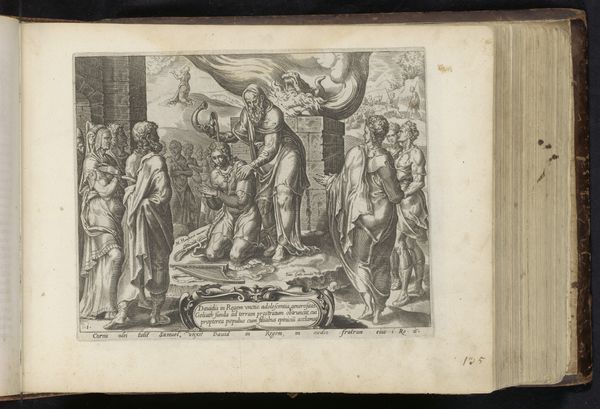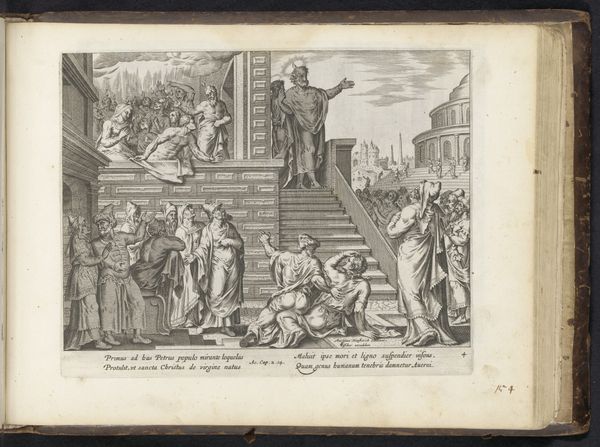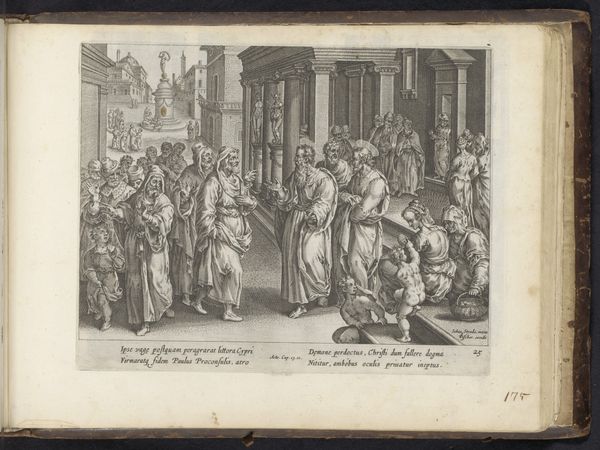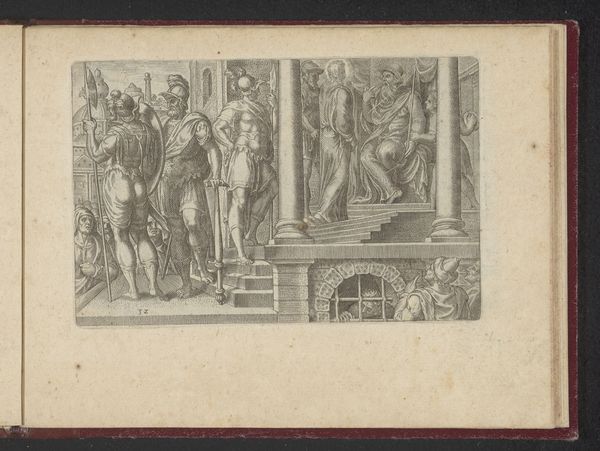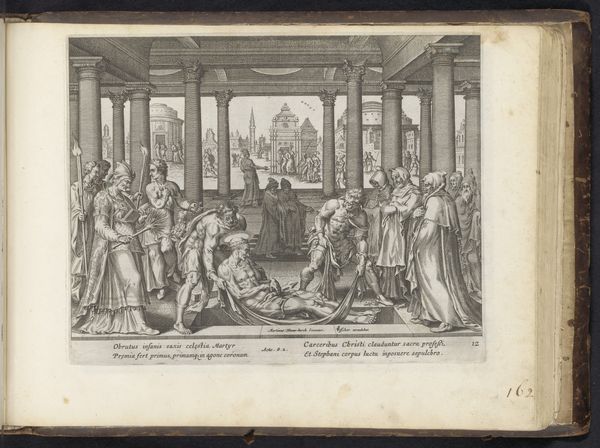
graphic-art, print, paper, engraving
#
graphic-art
#
narrative-art
#
baroque
# print
#
figuration
#
paper
#
line
#
history-painting
#
engraving
Dimensions: height 205 mm, width 250 mm
Copyright: Rijks Museum: Open Domain
Curator: What strikes me immediately about this print is its dramatic, almost theatrical quality. There's a sense of stagecraft in how the figures are arranged, how the light falls. Editor: That's a perceptive reading. We're looking at an engraving called "Saul Receives David at Court." The Rijksmuseum attributes it to an anonymous artist, dating the work sometime between 1554 and 1646. Curator: The figure of Saul on his throne seems intentionally stiff, radiating an air of guarded authority. The posture is really interesting in the context of thrones as established seats of power. Editor: Absolutely. Thrones themselves carry heavy symbolic weight, representing not just earthly power but also divine right in many cultures. Saul’s rigid posture likely signifies both his kingly role and perhaps a certain unease, a wariness regarding David. The artist definitely leverages Saul's visual presence. Consider, also, how access to the King visually reinforces this authority. Curator: And the presence of David! Look at how much younger and perhaps less burdened by that weight he is shown to be; how carefully the artist contrasted them. It seems that their positioning here prefigures a great narrative of eventual kingship for David. The use of line work almost guides the eye toward this future, if you catch my meaning. Editor: I see it. It's interesting to consider this artwork’s moment in history too. Remember that prints like these weren't just aesthetic objects. They served as accessible forms of storytelling, circulating biblical narratives and reinforcing social and moral frameworks for a wider public audience. Curator: That makes so much sense when looking at it through a cultural lens! You see these echoes in iconography even now; there's an immediacy of story, but layered into it are also symbols of cultural power struggles and acceptance. Editor: The placement of each figure feels deliberate. It's a commentary on power, youth, and societal dynamics, accessible to the common viewer, even without being able to read the Bible. A compelling visual tale told through the print medium. Curator: Reflecting on this print, I’m struck by how enduring these visual tropes become. The archetype of the reluctant hero, the burdened king, they continue to resonate across art forms and time periods. Editor: Agreed. And from a historical vantage, understanding the purpose and broad circulation of such prints helps us appreciate their significant role in shaping popular imagination and shared cultural values of the time.
Comments
No comments
Be the first to comment and join the conversation on the ultimate creative platform.

